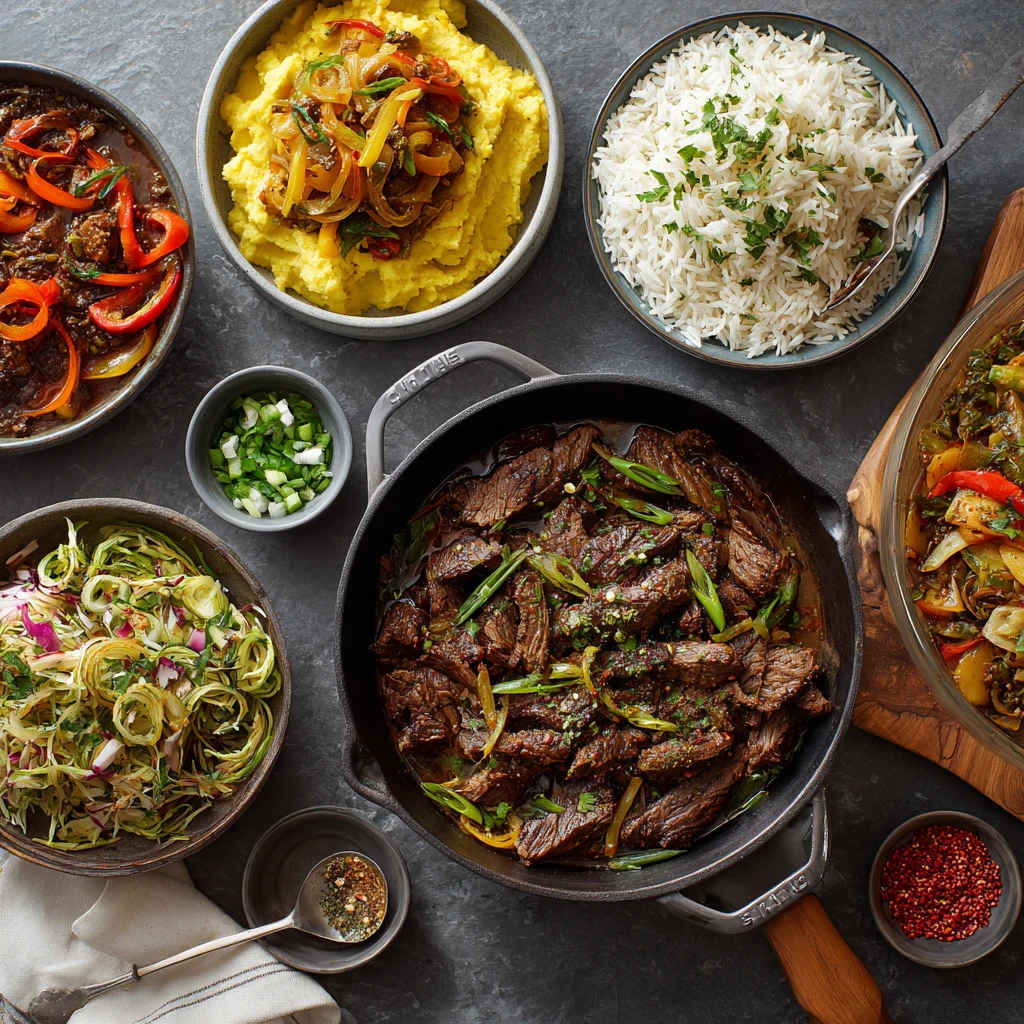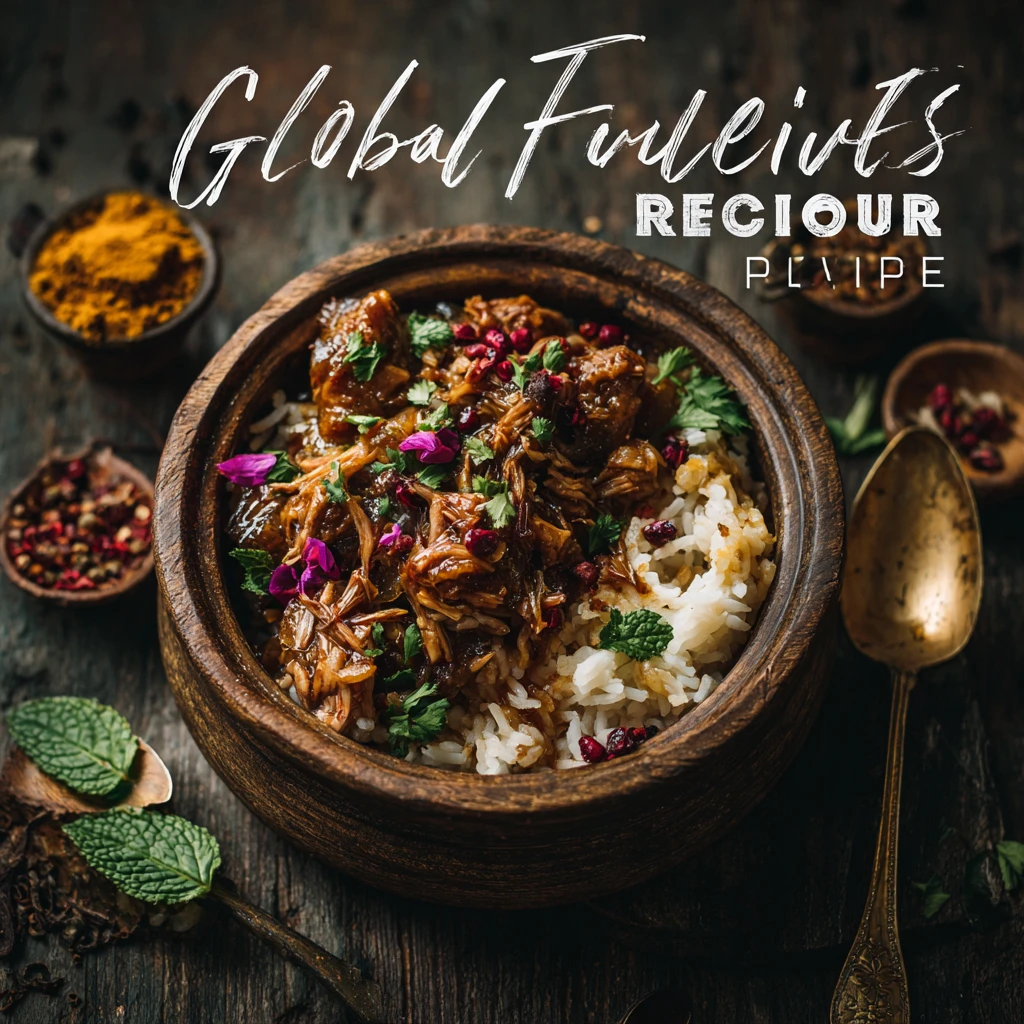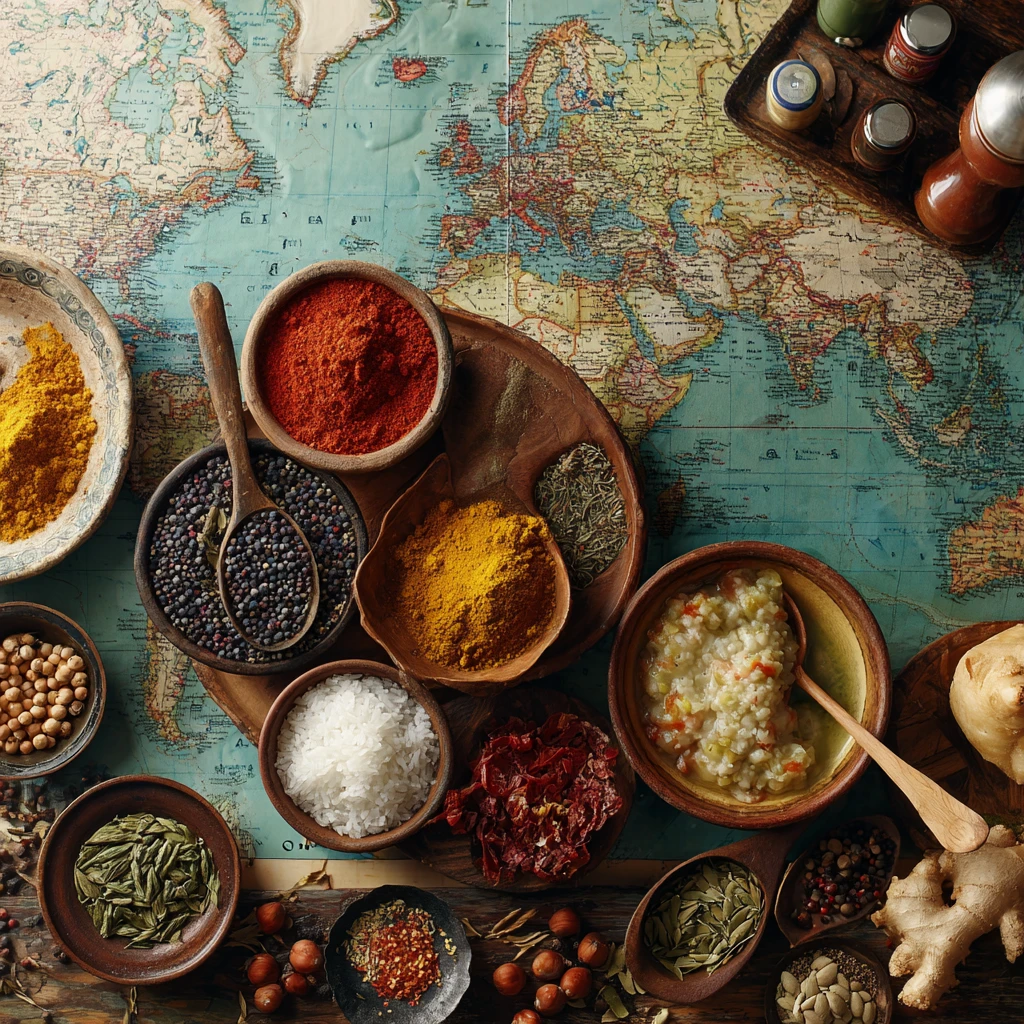Spice Up Your Life: Top 10 Global Flavors You Can Cook at Home
Embark on a culinary adventure without leaving your kitchen! The world is brimming with vibrant flavors just waiting to be explored. Forget bland weeknight dinners and embrace the excitement of international cuisine. This guide unveils ten incredible global flavor profiles you can easily recreate at home, complete with tips and tricks to make each dish a success. Prepare to tantalize your taste buds and become a citizen of the world, one delicious bite at a time.

1. The Zesty Appeal of Mediterranean Cuisine
The Mediterranean diet is renowned not only for its health benefits but also for its incredibly fresh and vibrant flavors. Think sun-ripened tomatoes, fragrant herbs, and plenty of olive oil.
Embracing the Mediterranean Palette
Key ingredients include:
- Olive Oil: The cornerstone of Mediterranean cooking. Use extra virgin olive oil for its rich flavor and health benefits.
- Fresh Herbs: Oregano, basil, rosemary, and thyme are essential. Use fresh herbs whenever possible for the best flavor.
- Lemons: Add a bright, citrusy note to almost any dish.
- Garlic: Aromatic and flavorful, garlic is used generously in Mediterranean cooking.
- Tomatoes: From sun-dried to fresh, tomatoes are a versatile ingredient.
Simple Mediterranean Recipes to Try
- Greek Salad (Horiatiki): Combine tomatoes, cucumbers, onions, olives, feta cheese, and a simple olive oil and oregano dressing.
- Lemon Herb Roasted Chicken: Marinate chicken in lemon juice, olive oil, garlic, and herbs before roasting.
- Tzatziki Sauce: A refreshing yogurt-based sauce with cucumbers, garlic, and dill. Perfect for dipping or as a topping.
2. The Spicy Kick of Thai Cuisine
Thai food is a symphony of flavors: sweet, sour, salty, and spicy, all working in perfect harmony.
Mastering the Thai Flavor Profile
Essential ingredients for Thai cooking include:
- Fish Sauce: Adds a salty, umami flavor. Use sparingly, as it's quite potent.
- Lime Juice: A key source of acidity.
- Chili Peppers: For heat. Adjust the amount to your preference.
- Ginger and Galangal: Aromatic roots that add depth of flavor. Galangal has a more citrusy, piney flavor than ginger.
- Coconut Milk: Adds richness and sweetness.
Easy Thai Recipes for Beginners
- Pad Thai: Stir-fried rice noodles with shrimp, tofu, peanuts, bean sprouts, and a tangy tamarind sauce.
- Green Curry: A creamy coconut milk-based curry with green chilies, vegetables, and protein of your choice.
- Tom Yum Soup: A hot and sour soup with shrimp, lemongrass, galangal, and lime leaves.
3. The Aromatic Wonders of Indian Cuisine
Indian cuisine is incredibly diverse, with each region boasting its own unique spices and flavors.
Understanding the Indian Spice Rack
Essential spices for Indian cooking include:
- Turmeric: Known for its vibrant color and health benefits.
- Cumin: Adds a warm, earthy flavor.
- Coriander: Adds a bright, citrusy note.
- Garam Masala: A blend of warming spices like cinnamon, cardamom, and cloves.
- Chili Powder: For heat.
Beginner-Friendly Indian Recipes
- Chicken Tikka Masala: Marinated chicken cooked in a creamy tomato-based sauce.
- Vegetable Curry: A simple curry with potatoes, cauliflower, peas, and other vegetables.
- Lentil Soup (Dal): A hearty and flavorful lentil soup, often served with rice.
4. The Bold Flavors of Mexican Cuisine
Mexican food is much more than just tacos and burritos. It’s a celebration of fresh ingredients and bold flavors.
Essential Ingredients for Mexican Cooking
Key ingredients for Mexican cuisine include:
- Chili Peppers: From mild to fiery, chilies are essential for adding heat and flavor.
- Cilantro: A fresh herb with a distinctive flavor.
- Lime Juice: Adds acidity and brightness.
- Onions: A staple ingredient in many Mexican dishes.
- Tomatoes: Used in salsas, sauces, and stews.
Simple Mexican Recipes to Recreate
- Guacamole: Mashed avocado with onions, cilantro, lime juice, and chili peppers.
- Salsa: A versatile condiment made with tomatoes, onions, cilantro, and chili peppers.
- Chicken Enchiladas: Tortillas filled with chicken and cheese, covered in enchilada sauce, and baked.
5. The Comforting Simplicity of Italian Cuisine
Italian cuisine is all about using high-quality ingredients and simple techniques to create delicious and satisfying meals.
Key Ingredients in Italian Cooking
Essential ingredients for Italian dishes:
- Tomatoes: From fresh to canned, tomatoes are a staple.
- Olive Oil: Extra virgin olive oil is a must.
- Garlic: Used generously in many dishes.
- Basil: A fragrant herb that adds a fresh, sweet flavor.
- Parmesan Cheese: Adds a salty, umami flavor.
Easy Italian Recipes for Home Cooks
- Spaghetti Aglio e Olio: A simple pasta dish with garlic, olive oil, chili flakes, and parsley.
- Pasta Pomodoro: Pasta with a simple tomato sauce.
- Bruschetta: Toasted bread topped with tomatoes, basil, and olive oil.
6. The Delicate Balance of Japanese Flavors
Japanese cuisine emphasizes simplicity, freshness, and presentation.
Understanding Japanese Flavor Profiles
Key ingredients include:
- Soy Sauce: Adds a salty, umami flavor.
- Mirin: A sweet rice wine used for flavoring.
- Rice Vinegar: Adds acidity.
- Dashi: A Japanese soup stock made from seaweed and fish flakes.
- Ginger: Adds a spicy, refreshing flavor.
Beginner-Friendly Japanese Recipes
- Sushi Rolls: Rice, seaweed, and fillings such as avocado, cucumber, and fish.
- Miso Soup: A traditional Japanese soup made with miso paste, tofu, and seaweed.
- Chicken Teriyaki: Chicken marinated in a sweet and savory teriyaki sauce.
7. The Hearty Flavors of German Cuisine
German cuisine is known for its hearty dishes and comforting flavors.
Essential Ingredients in German Cooking
Key ingredients for German dishes:
- Potatoes: A staple ingredient.
- Sausage: A variety of sausages are popular.
- Cabbage: Used in sauerkraut and other dishes.
- Mustard: A condiment used on sausages and other meats.
- Beer: Used in cooking and as a beverage.
Easy German Recipes to Try
- Sausage with Sauerkraut: A classic German dish.
- Potato Salad: A creamy potato salad with mayonnaise, mustard, and onions.
- Schnitzel: Breaded and fried pork or veal cutlets.
8. The Exotic Flavors of Moroccan Cuisine
Moroccan cuisine is a blend of Berber, Arab, and French influences, resulting in a unique and flavorful cuisine.
Mastering the Moroccan Spice Blend
Essential spices for Moroccan cooking include:
- Cumin: Adds a warm, earthy flavor.
- Ginger: Adds a spicy, refreshing flavor.
- Turmeric: Known for its vibrant color and health benefits.
- Cinnamon: Adds a warm, sweet flavor.
- Saffron: Adds a delicate flavor and vibrant color.
Simple Moroccan Recipes to Recreate
- Chicken Tagine: A slow-cooked stew with chicken, vegetables, and spices.
- Couscous: A grain that is often served with tagines.
- Harira Soup: A hearty tomato-based soup with lentils, chickpeas, and herbs.
9. The Spicy and Tangy Flavors of Korean Cuisine
Korean cuisine is known for its bold flavors and use of fermented ingredients.
Essential Ingredients for Korean Cooking
Key ingredients for Korean dishes:
- Gochujang: A fermented chili paste that adds heat and umami flavor.
- Soy Sauce: Adds a salty, umami flavor.
- Sesame Oil: Adds a nutty flavor.
- Garlic: Used generously in many dishes.
- Ginger: Adds a spicy, refreshing flavor.
Beginner-Friendly Korean Recipes
- Bibimbap: A mixed rice dish with vegetables, meat, and a fried egg.
- Kimchi Fried Rice: Fried rice with kimchi, vegetables, and meat.
- Korean BBQ: Grilled meats marinated in a sweet and savory sauce.
10. The Vibrant Flavors of Vietnamese Cuisine
Vietnamese cuisine is known for its fresh herbs, light flavors, and use of fish sauce.
Key Ingredients in Vietnamese Cooking
Essential ingredients for Vietnamese dishes:

- Fish Sauce: Adds a salty, umami flavor.
- Rice Noodles: A staple ingredient.
- Fresh Herbs: Mint, cilantro, and basil are commonly used.
- Lime Juice: Adds acidity and brightness.
- Chili Peppers: For heat.
Easy Vietnamese Recipes to Try
- Pho: A Vietnamese noodle soup with broth, rice noodles, herbs, and meat.
- Spring Rolls: Rice paper rolls filled with vegetables, herbs, and protein.
- Banh Mi: A Vietnamese sandwich with baguette, meat, vegetables, and pate.
Frequently Asked Questions
- What are the easiest global cuisines to start cooking at home? Mediterranean, Italian, and Mexican cuisines are generally considered easier for beginners due to their simpler techniques and readily available ingredients.
- Where can I find authentic ingredients for these cuisines? Most major grocery stores carry a wide variety of international ingredients. Asian markets and specialty food stores are also great resources for harder-to-find items. Online retailers are also a great way to source ingredients.
- How can I adjust the spice level in these dishes? When a recipe calls for chili peppers, start with a small amount and add more to taste. Removing the seeds and membranes from chili peppers will also reduce the heat.
- Can I substitute ingredients if I can't find them? Yes, substitutions are often possible. Research suitable alternatives online, keeping in mind the flavor profile you're trying to achieve. For example, if you can't find galangal for Tom Yum soup, you can use ginger as a substitute, though the flavor will be slightly different.
- Are there any online resources for learning more about these cuisines? Yes! Many websites and cooking channels offer detailed instructions and recipes for global cuisines. Search for reputable sources and watch videos to learn techniques.



